Article's Content
If you’re curious about how leading SaaS brands are using social media as a distribution channel, this piece is for you. I break down how five SaaS companies use these platforms, as well as tips on how you can use the channel to get your desired results.
Let’s jump right in.
1. Hootsuite
Hootsuite, a social media scheduling tool, invests in remixing existing content to fit different social media channels. The company knows that not everyone in its audience learns through reading or has the time to consume a 2000+ word article. So, its team designed a whole content repurposing menu to increase organic reach.
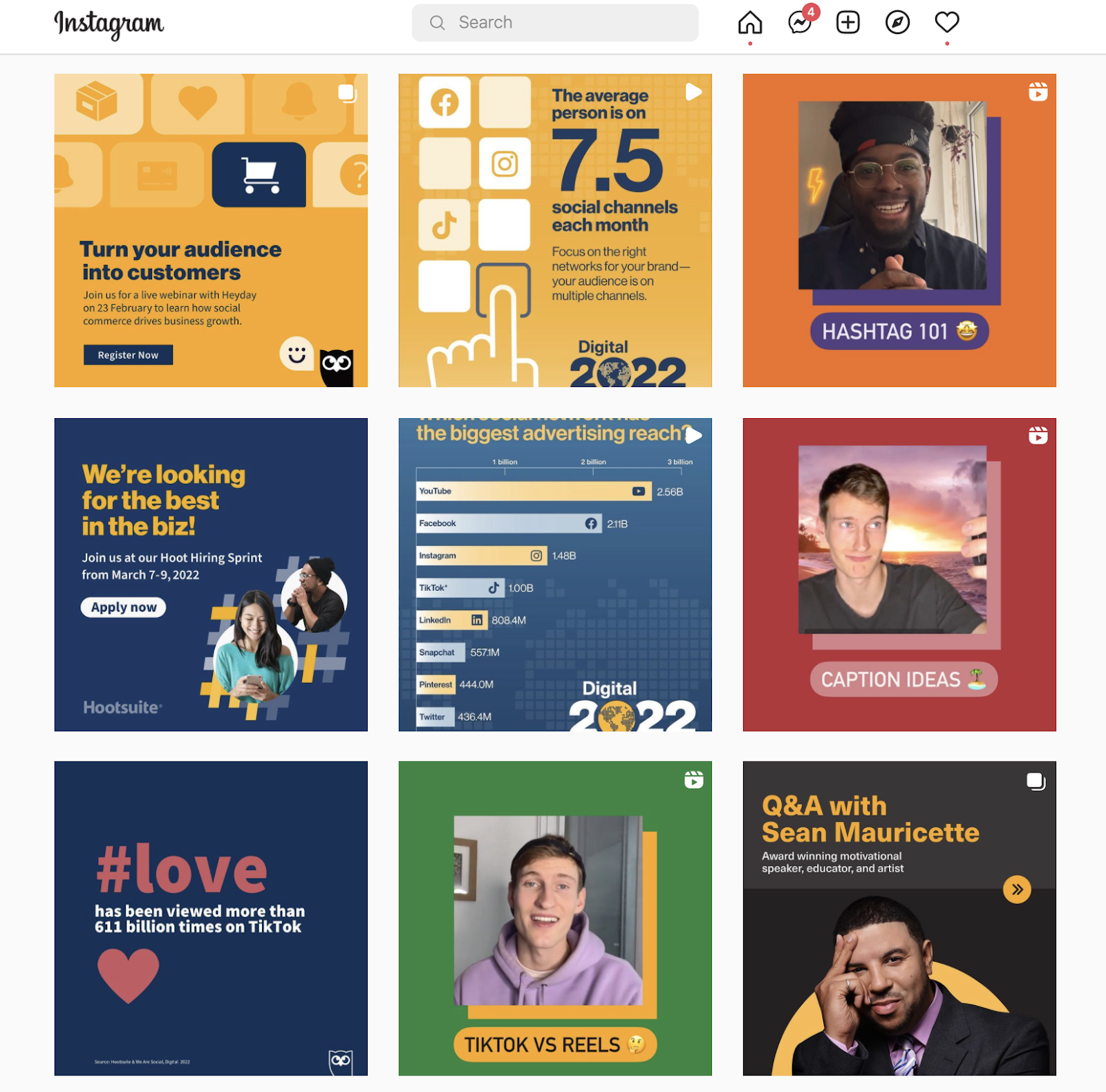
For example, Hootsuite published the blog post 264 Creative Instagram Captions in 2016. The piece was barely attracting 5,000 monthly organic traffic even five years after going live. Now, it’s driving 980,000 monthly sessions.
To learn how Hootsuite achieved this drastic increase in traffic, we need to go back to 2021 when the company began updating and repurposing evergreen content using this content repurposing menu:

Repurposing content not only saves Hootsuite from creating all of its content from scratch, but also makes scaling content on different platforms easier.
For example, the team repurposed the piece into a 10-minute YouTube video in April 2023, generating over 7,000 views in just two months:
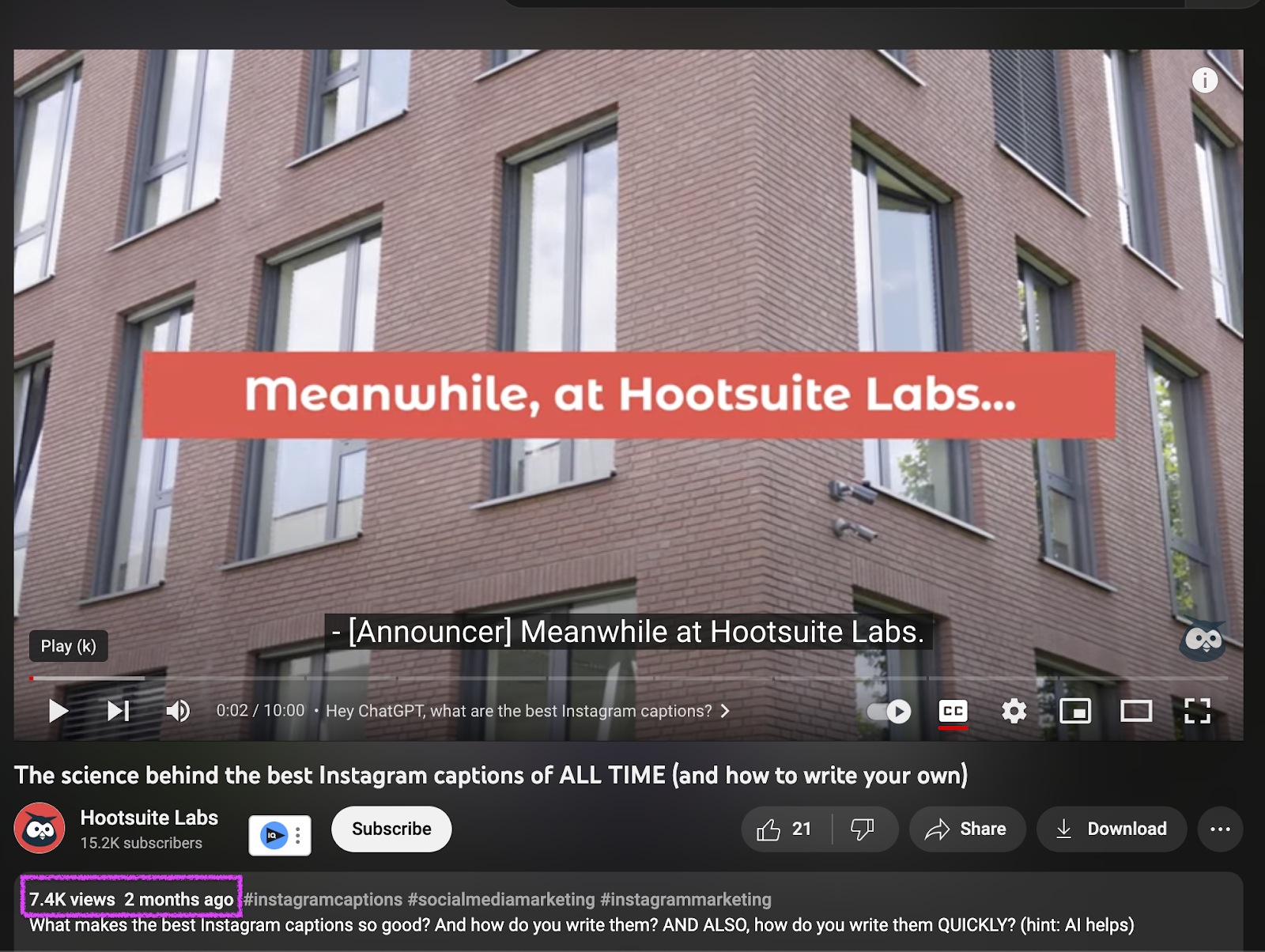
YouTube is the largest video-sharing platform and the second-largest search engine after Google. Repurposing blog posts into videos lets you tap into YouTube’s massive user base and leverage the popularity of video content marketing.
Plus, YouTube videos rank well in search engine results, not just on YouTube but also on Google. Optimizing video titles, descriptions, and tags makes it easy for you to increase your visibility in search engine rankings and drive organic traffic to your video and website.
A video search on Google for the keyword “captions for Instagram,” which has more than 570,000 monthly searches, shows Hootsuite ranking number 2.
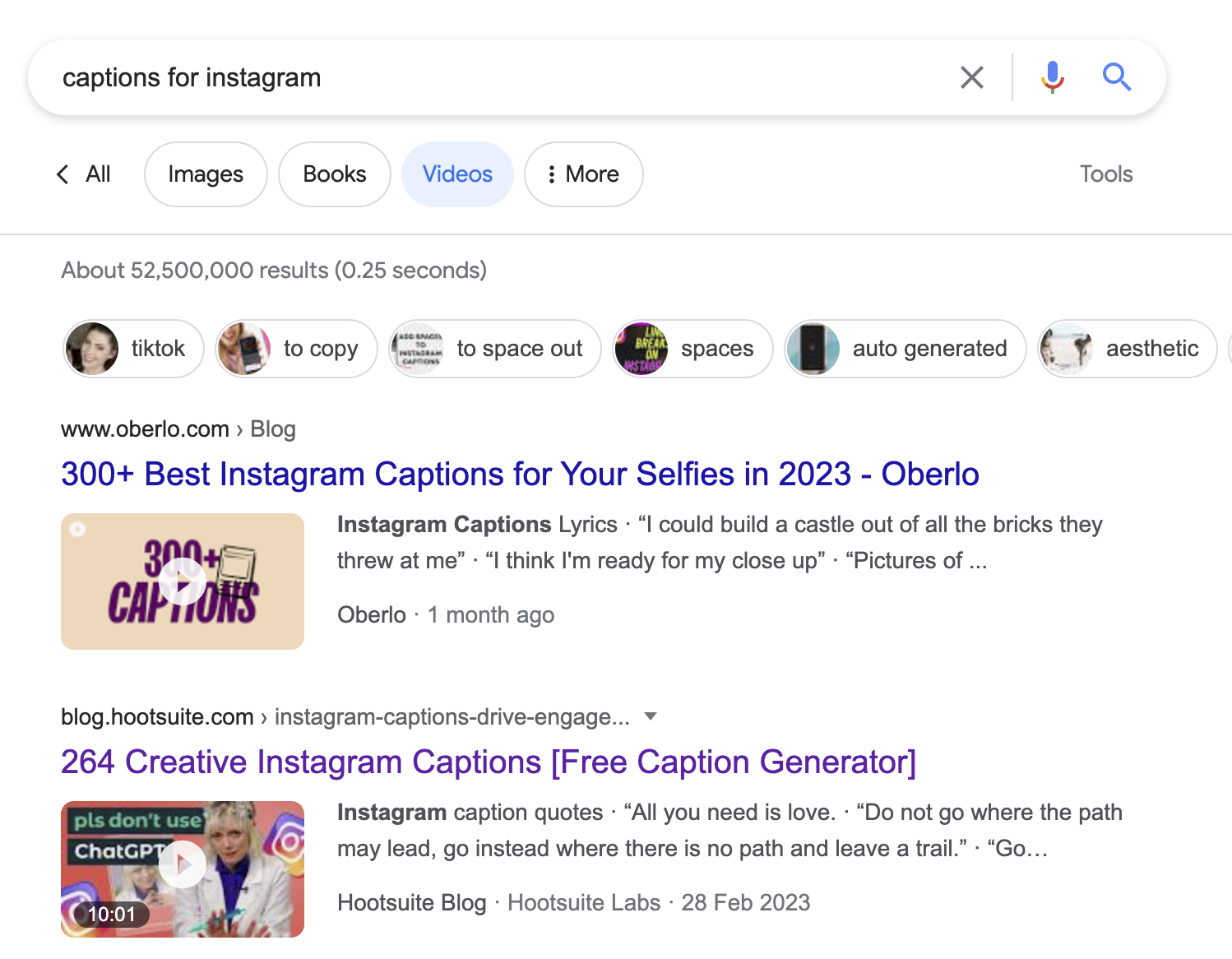
YouTube videos also have a longer lifespan compared to social media posts. Once uploaded, your videos can continue to generate views, engagement, and traffic over an extended period. This offers you the opportunity to have new viewers discover your content and keeps the brand visible over time.
Hootsuite also repurposes its content for other channels, including X (formerly known as Twitter), Instagram, and Facebook. As a result, Hootsuite’s blog attracts 8 million organic visitors every month — double the amount of traffic it had when I first wrote a case study on Hootsuite’s approach in 2022. Its social media following has also grown significantly since then.
If you are looking to create a content repurposing menu for your brand, you should read this case study to see Hootsuite’s formula. You’ll find tips and examples to inspire yours.
2. Gong
Gong, a platform for revenue intelligence, receives most of its social media traffic from LinkedIn compared to other platforms.
This makes perfect sense given that Gong sells to B2B sales professionals, and over 90% of Fortune 500 companies have a presence on the professional networking platform.
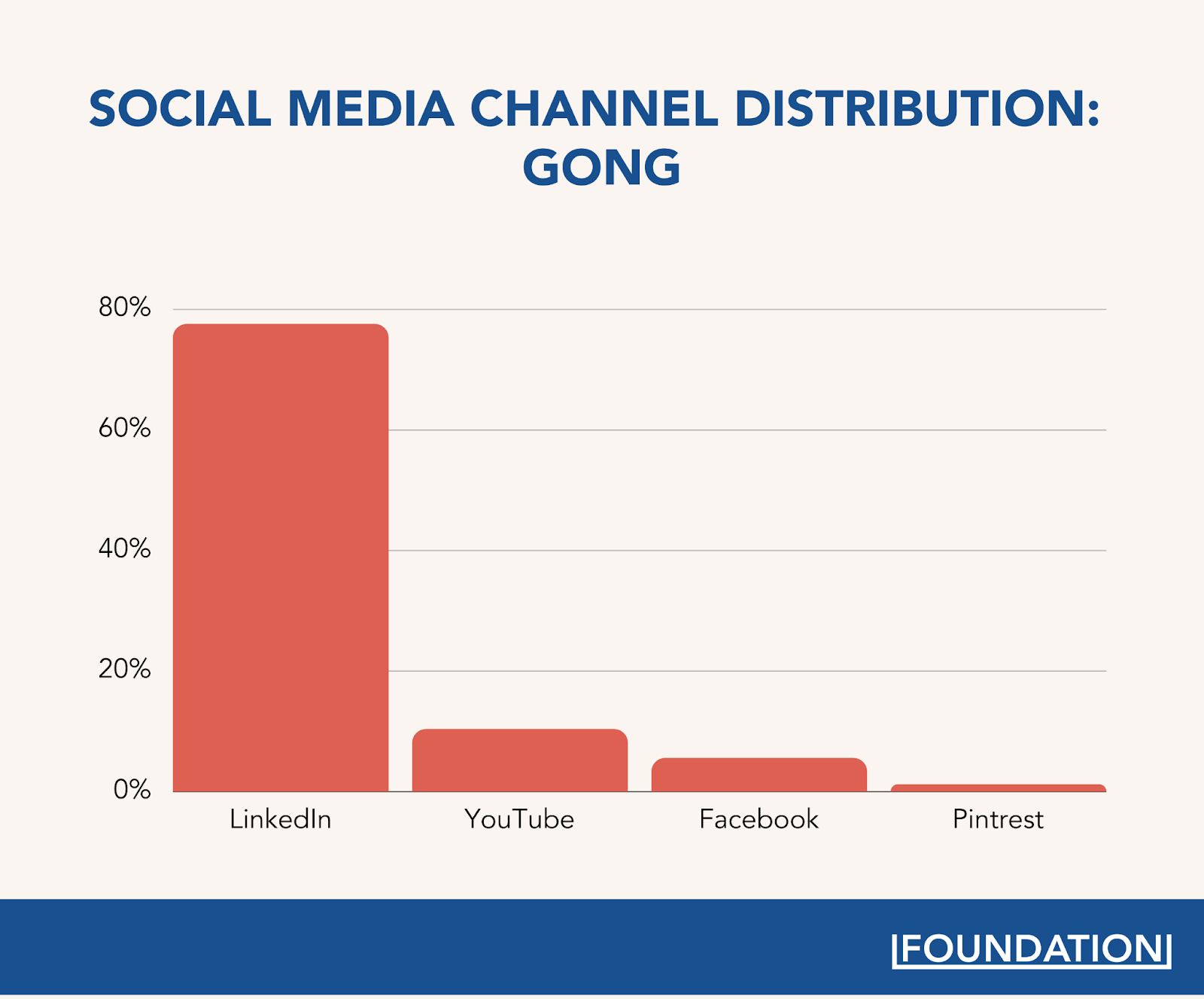
With 212,000+ followers on LinkedIn, Gong shares about 10-15 posts on its company page every week, which is more than many B2B SaaS companies share in a whole year. Even though the consistent volume of posts helps to keep the company at the top of its audience’s feeds, the quality of content also plays a significant role.
Gong shares a mix of videos, data-driven posts, text-based content, memes, and other formats that resonate with its audience. One of the company’s best-performing content types is the potent strategy of overlaying graphics with specific insights:
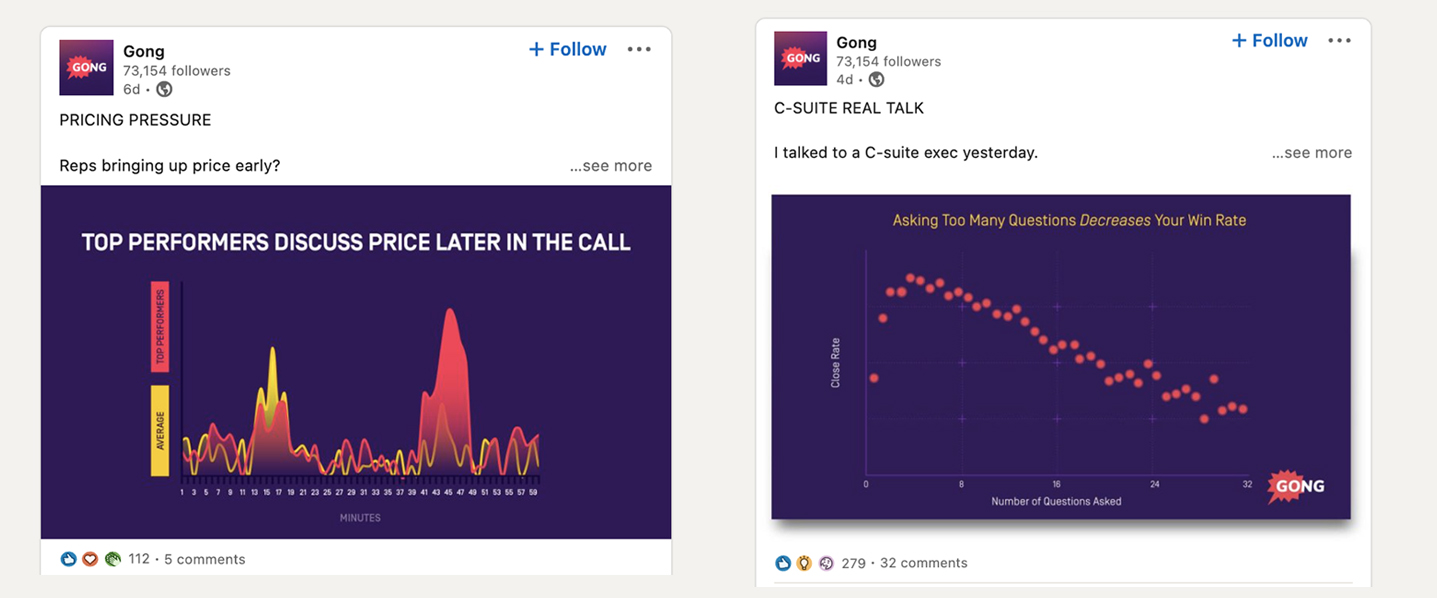
Such posts engage its followers because the company provides simple insights that can be immediately applied to sales calls, like mentioning the price later or avoiding too many questions when talking to C-suite prospects. These insights are valuable to the company’s followers and justify why they followed Gong in the first place.
Plus, this shows Gong understands content-market fit perfectly — aligning the value of the content, customer needs and wants, and the distribution channels used by the brand.
Gong recognizes that its audience on LinkedIn wants opinions, techniques, and data, so the company focuses on delivering that. It also pays attention to the formats and styles of content that people prefer on LinkedIn, such as using text with dramatic pauses and attention-grabbing hooks.
For example, this post is repurposed from one of Gong’s lead magnets:

The one-line lede is a stat that grabs the attention of any motivated sales reps, reeling them in to read the rest of the post.
If you want to steal Gong’s complete LinkedIn playbook, you should check out the case study Ross wrote about it a while back. You’ll definitely find lots of valuable insights there.
3. Confluent
Marketing to tech professionals is no easy task, as they are a savvy audience with deep technical expertise and little time to evaluate many products.
Confluent, a cloud-native data streaming platform, recognizes this and uses a technical content marketing strategy to build trust and convert thousands of enterprise customers, including well-known names such as Bosch, Citigroup, Expedia, eBay, and Instacart. And these efforts have paid off — Confluent now has a $6.5+ billion valuation, over $100,000 in annual recurring revenue (ARR), and an impressive 452,000 followers on LinkedIn.
One way Confluent does social media right is by turning conversations with subject matter experts into content. When you go out of your way to get guests for your podcast or video, you want to make the most ROI out of that investment.
Confluent interviewed Anne Steptoe, VP of Infrastructure at Wealthsimple, and Srdjan Pejic, Senior Software Engineer at Wealthsimple, to show how the company uses the cloud-native data streaming platform to delight its own customers.
Confluent didn’t stop at turning the interview into a long-form blog post. It also repurposed the piece for LinkedIn and used a similar compelling hook like Gong’s to grab its audience’s attention. The post generated over 100 reactions from its audience.
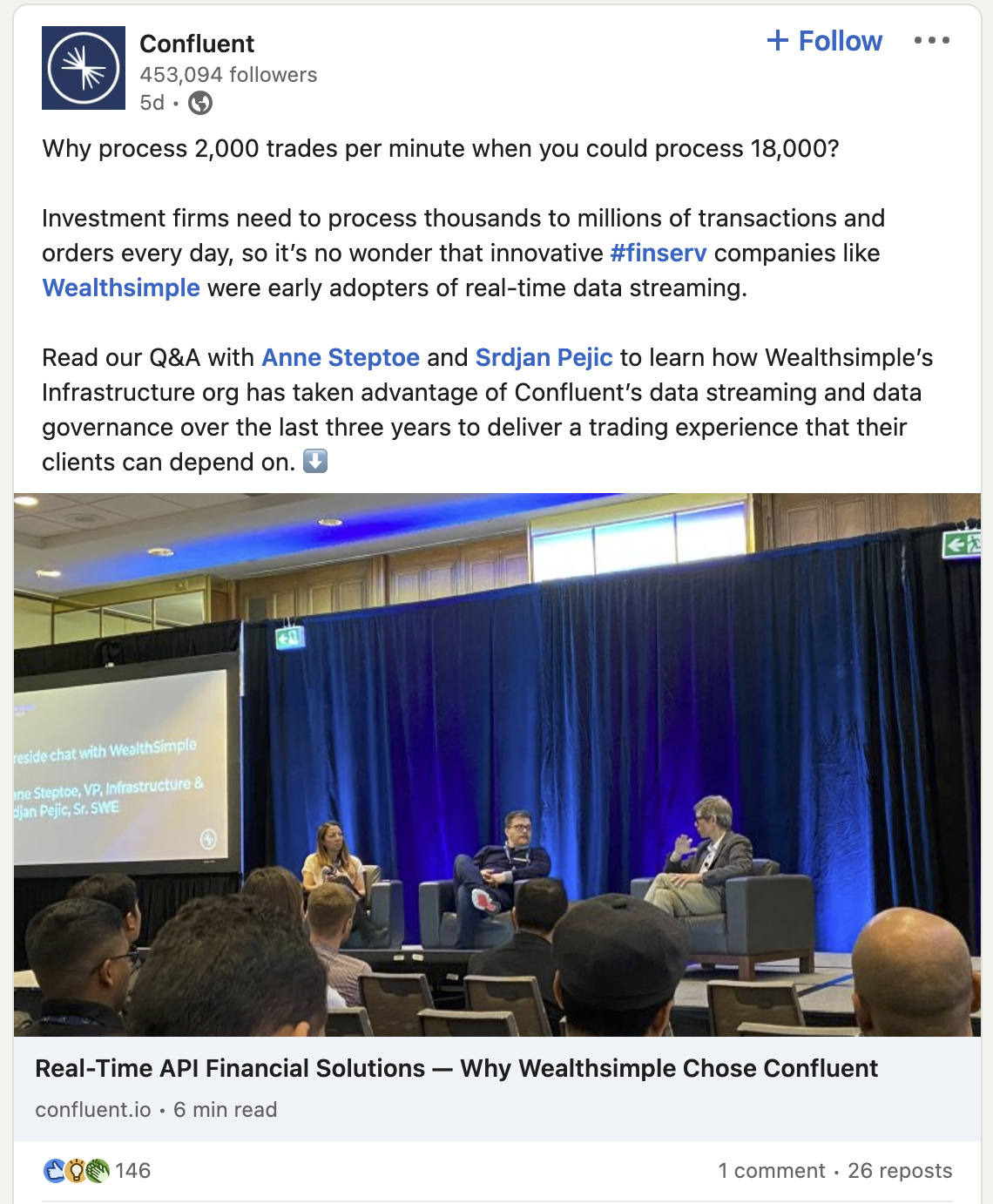
The article itself has generated over 600 backlinks in fewer than eight weeks. Of course, this might not seem like a lot, but if it keeps growing at this pace, it might generate more backlinks from other authoritative websites before the year is out.
You can reverse engineer this approach by finding an evergreen video or podcast and repurposing the content into interview-style blog posts, carousels, bite-sized (subtitled) videos, or a simple text post like Confluent did. Then get the experts you featured to share it with their audience. That’s how you get more eyes on your content.
Confluent also leverages the expertise of its employees to create blog posts on trending industry topics. For example, the repurposed piece below generated more than 300 reactions from Confluent’s followers:
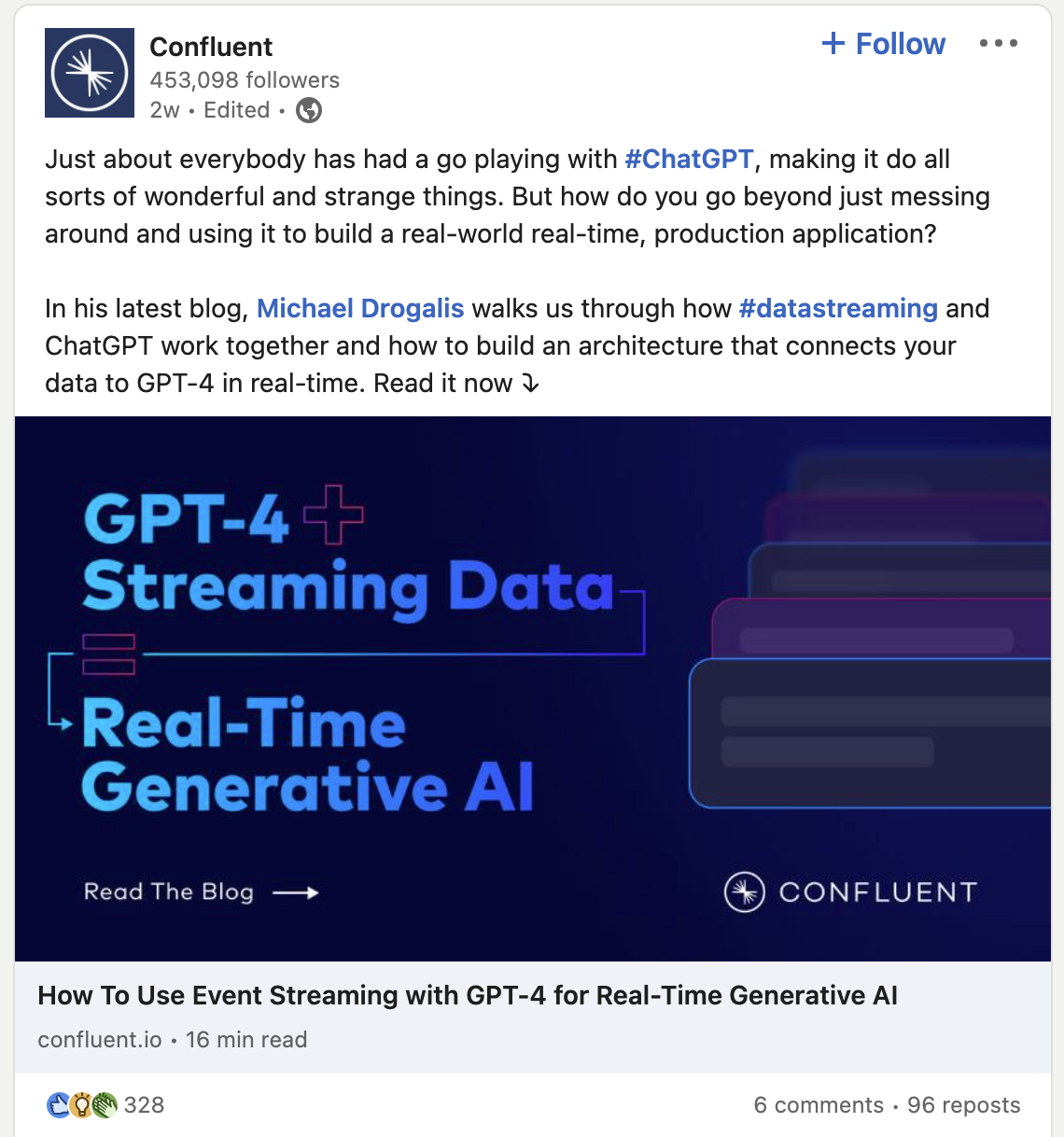
Of course, one of the reasons is that its audience is looking for ways to incorporate generative AI into their workflow. It’s no wonder the blog post drives as much as 2000 monthly organic traffic views, even if it was just written in June 2023.
If you serve a technical audience, and you’re looking to learn more about Confluent’s strategy to inspire yours, I wrote an in-depth case study you should definitely check out.
4. Slack
Having your own subreddit for customers and fans is a great way to market your brand.
Slack has a subreddit with 21,500 members, a space where users connect with each other, share experiences, ask questions, and give feedback.

The community is still quite active, as the most recent post was made a few hours before I took this screenshot.
When you build a community around your product, you get direct access to your audience. You can interact with them, learn from them, and, most importantly, get valuable, unfiltered feedback on your products and services. This gives you a unique advantage because they can gather insights from their audience in ways that their competitors can’t.
Reddit is an excellent platform for building a community, but many SaaS companies underestimate its power. Subreddits are often anonymous, with users not revealing their real names or companies. However, Slack realized the potential and built a vibrant community on the platform. As a result, they communicate, connect, and build stronger relationships with its audience on a daily basis.
If you want to create a thriving community for your brand, don’t overlook the power of Reddit. It can be a game-changer for your marketing strategy. Read this article to see how you can use Reddit to build an engaged and loyal user community.
5. Shopify
Pinterest is a B2B marketing channel that often gets overlooked, but it’s actually the fourth most popular social media site in the US, with around 450 million users. In 2021, the company even made over $1 billion in ad revenue. Some brands, like Shopify, have recognized the opportunity and are leveraging Pinterest effectively.
Shopify has an active presence on Pinterest that has resulted in a pretty decent following.

Shopify has created a top board that provides valuable resources for eCommerce brands. It also has an interesting pin about “How To Start A Podcast,” which is well-optimized for search and includes eye-catching imagery designed to evoke emotions.
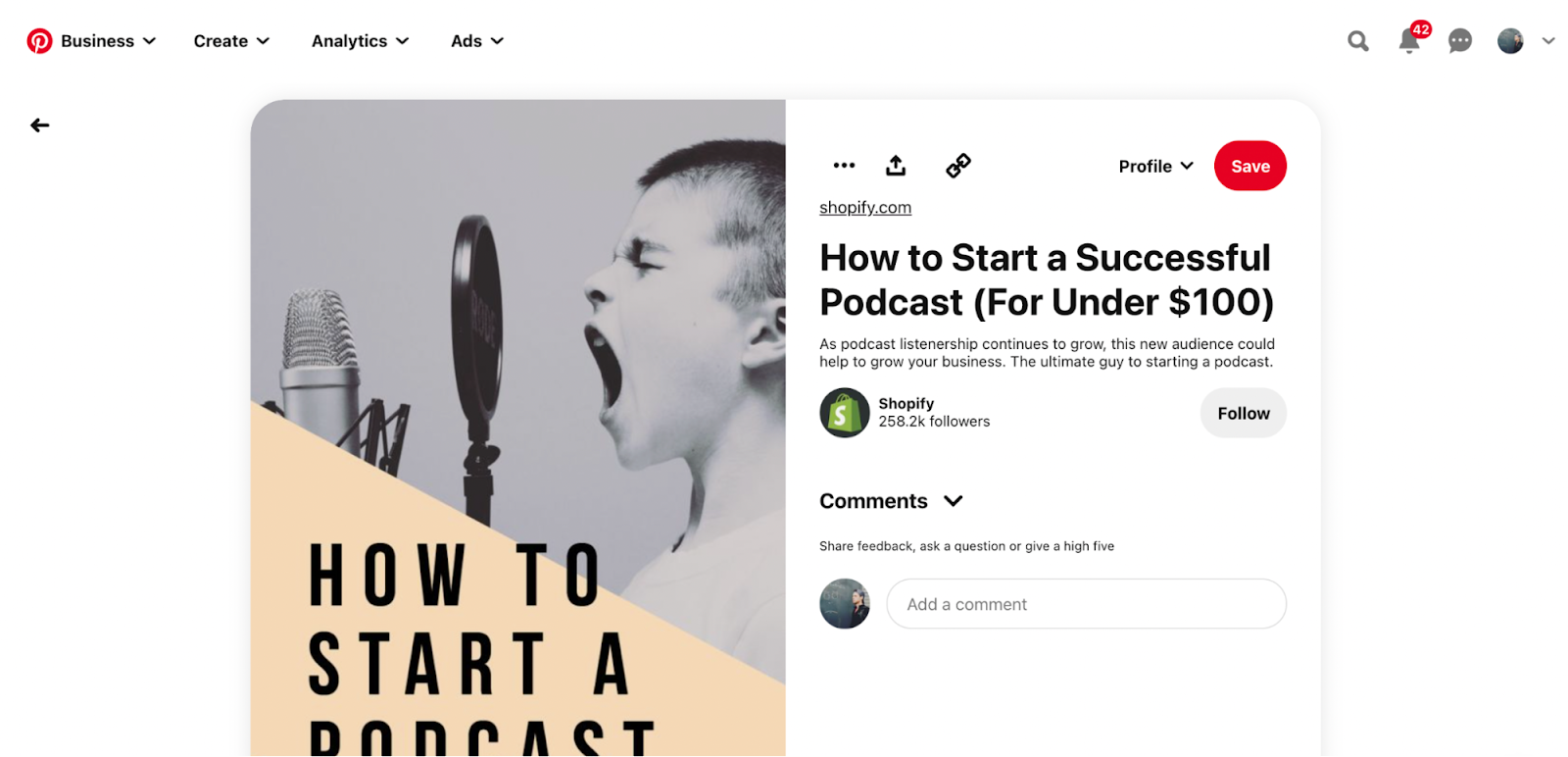
There are numerous examples of B2B brands sharing great content on Pinterest, so it’s worth exploring the platform before dismissing it. In fact, we wrote a practical Pinterest marketing guide you should check out to help you make the most of the platform.
If you’re interested in sharing your content on Pinterest in the coming weeks, here’s a simple step-by-step process to get started:
- Audit your top blog content.
- Identify the main and secondary keywords.
- Create content clusters based on your audit.
- Utilize Pinterest Ads or Ahrefs for keyword research.
- Create boards based on your content clusters and research.
- Write keyword-optimized titles, descriptions, and more.
- Create new visual content if necessary.
- Set up automated daily sharing for each Pinterest board.
- Run the strategy for one month and analyze the results.
- Make adjustments if necessary and continue sharing.
Most of all, remember your content won’t rank overnight, so don’t get discouraged too quickly. Content marketing is a long-term effort, and Pinterest marketing is a perfect example of that.
Create Once, Distribute Forever
Creating high-quality content is a time-consuming process, even with the help of AI tools. It involves thorough research and writing pieces that deeply resonate with your audience. That’s why you shouldn’t let all the content you create simply exist on your website. Instead, leverage social media as a distribution channel and repurpose your content to suit the platforms where you share it.
To determine the best social media platforms for distribution and the type of content your audience prefers, use tools like SparkToro and Audiense for research.
These tools provide insights into where your audience spends the most time on social media and the kinds of content they enjoy consuming. Combine these insights with the tips found in the linked resources mentioned in this article, and you’ll be well on your way to a successful start.







